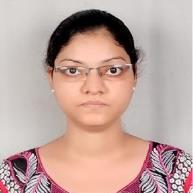
Anuja Dixit
Work place: Madhav Institute of Technology & Science, Gwalior, Madhya Pradesh, 474005, India
E-mail: anu2010cse1@gmail.com
Website:
Research Interests: Engineering, Computational Engineering, Computational Science and Engineering
Biography
Anuja Dixit is Research scholar pursuing M.Tech in Cyber Secutity from Madhav Institute of Technology & Science, Gwalior, India. She received B.Tech degree in Computer Science & Engineering from University Institute of Engineering & Technology, Kanpur, Uttar Pradesh, India.
Author Articles
A Review on Digital Image Watermarking Techniques
DOI: https://doi.org/10.5815/ijigsp.2017.04.07, Pub. Date: 8 Apr. 2017
Nowadays, Multimedia security [1] is a major issue. Images, video, audio, text files are losing their credibility day by day as they can be distorted or manipulated by using several tools. Ensuring the authenticity [2] and integrity of digital media is a major issue. The manipulation made by forgery tools are so smoothly done that we don’t even suspect that forgery may be involved in digital content. Multimedia data is facing several issues related to illegal distribution, duplication and manipulation of information conveyed by them. The digital watermarking [3] technique plays an important role in protecting digital content. In this paper, On the basis of their operating principles different watermarking techniques are categorized [4]. Attacks, applications and requirements [5] related to watermarking techniques are also discussed. Different watermarking techniques proposed by researchers for protecting copyrights of digital media are presented which are based on spatial and frequency domain. Frequency domain are getting much more attention due to use of wavelets which have high degree of resemblance to human visual system. In digital watermarking, secret information is embedded with original data for maintaining ownership rights of the digital content. Spatial domain watermarking techniques work over pixel characteristics and frequency domain watermarks concerned about different transformations that can be used with digital content. Imperceptibility, robustness, security, complexity and capacity are some requirements of the digital watermarking which completely depends on the algorithm used for watermarking.
[...] Read more.Copy-Move Image Forgery Detection a Review
DOI: https://doi.org/10.5815/ijigsp.2016.06.04, Pub. Date: 8 Jun. 2016
Due to the availability of various image processing tools forgery over an image can be performed very easily but very difficult to identify. In copy-move forgery, a segment is copied from the original image and pasted at some other location on the same image to hide significant objects of image or to bring additional information which is originally not present in image. Nowadays, this forgery technique is drawing researcher's attention. Till now many solutions are presented by researchers to detect such type of forgery in images. Several post-processing operations like rotation, alteration in intensity, noise addition, filtering and blurring can be applied over copy-moved segment which makes detection of forgery very difficult. Copy-move forgery detection is mainly based on finding similarity present in an image and establish a relationship between genuine image parts and pasted portion of the image. This paper is centralized towards providing survey to forgery detection techniques based on different block-based methods. In block-based methods image is divided in blocks of fixed dimension and further features are extracted corresponding to each block of image. Forged blocks are identified utilizing the similarity present between feature vectors.
[...] Read more.Other Articles
Subscribe to receive issue release notifications and newsletters from MECS Press journals